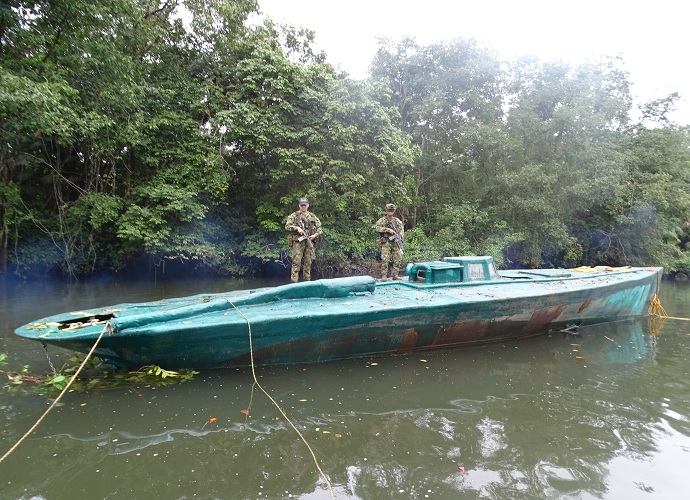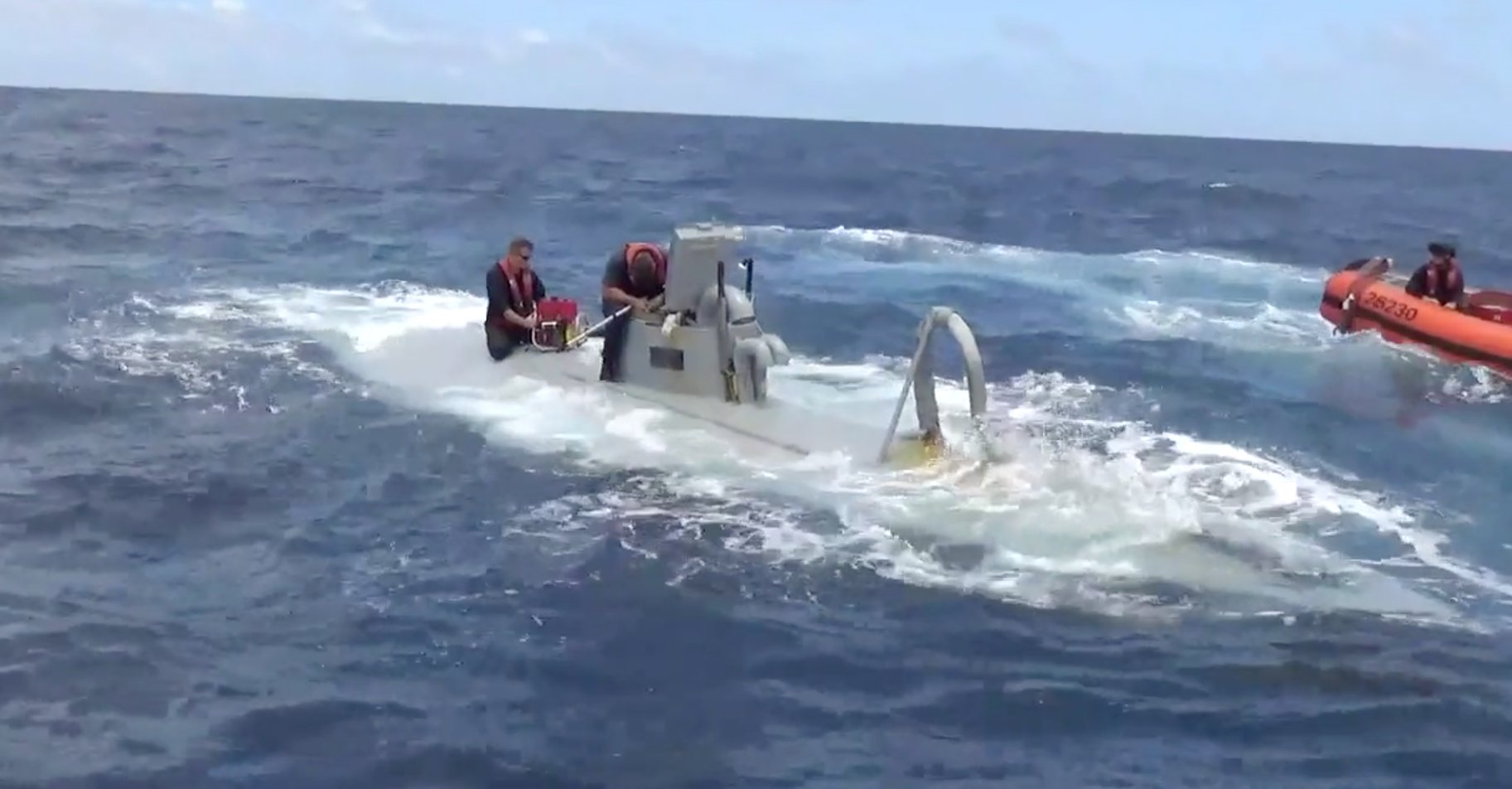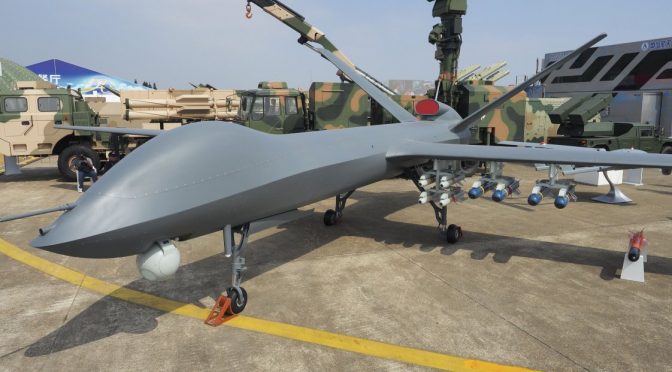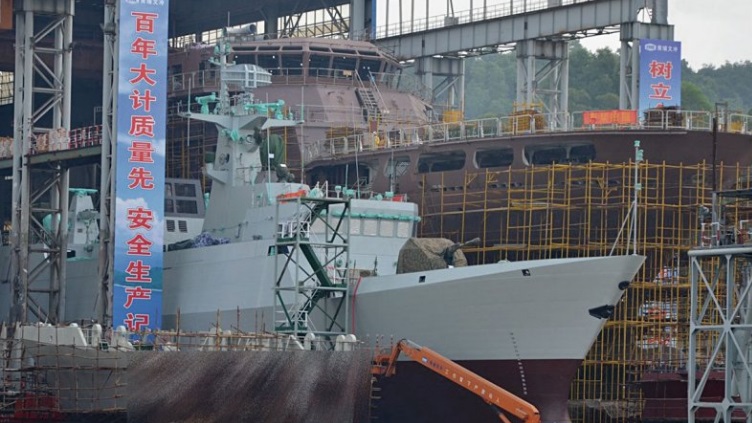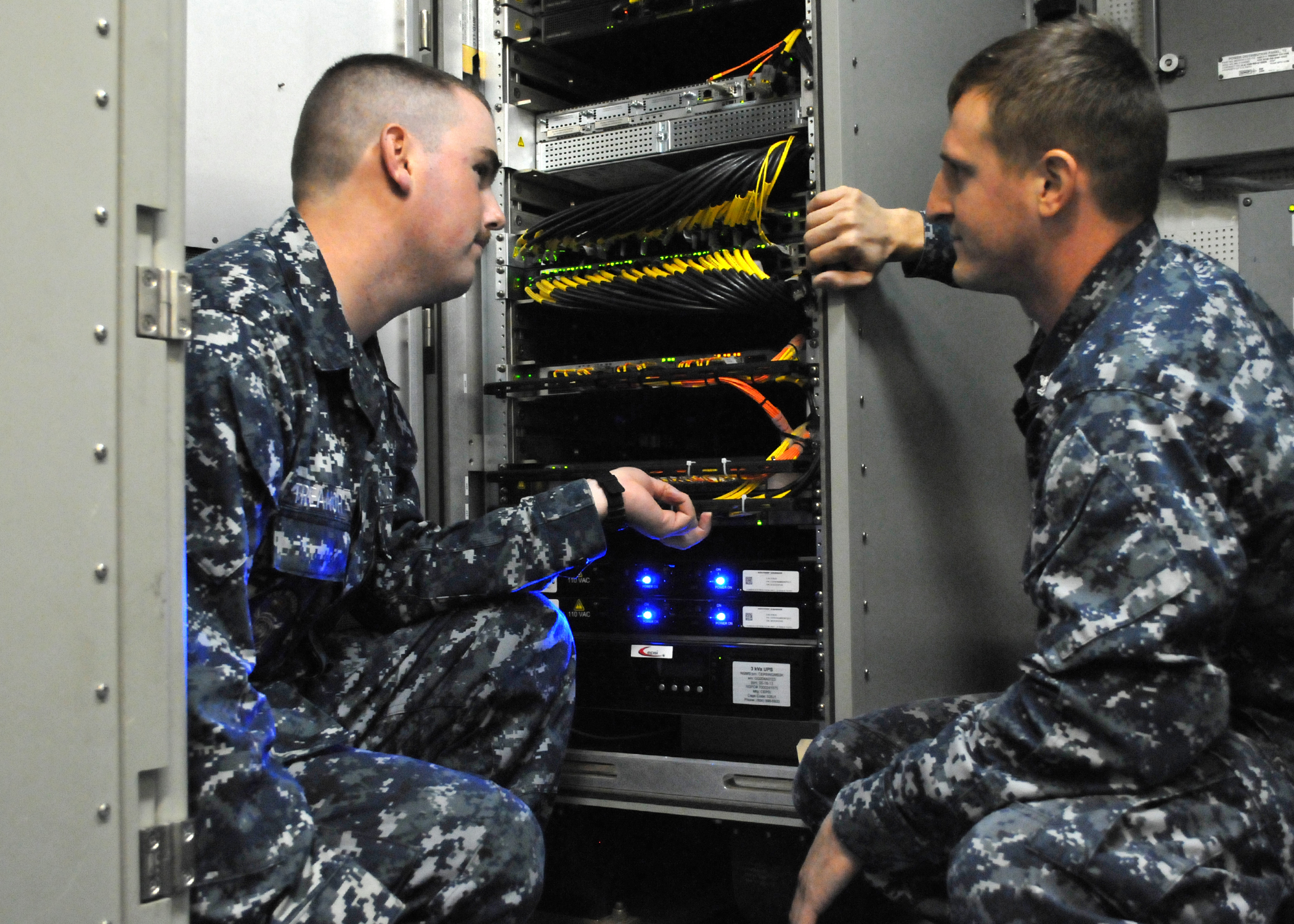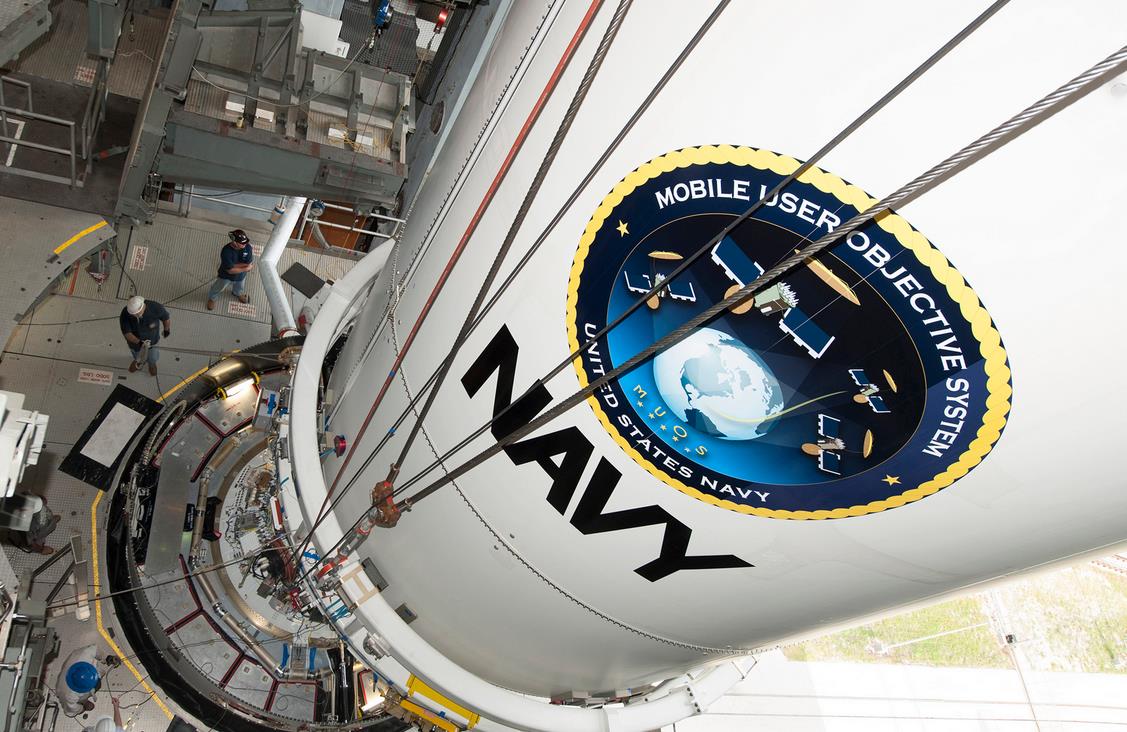By Matthew Merighi
Join us for the latest episode of Sea Control for a conversation with Professor Kate Walsh of the U.S. Naval War College about the Blue Economy, ocean clusters, and their relevance for maritime security. It’s a conversation about innovation, organization, and competition between the U.S. and China.
Download Sea Control 142 – Blue Economy and Ocean Clusters with Kate Walsh
For additional information on this topic, take a look at the following links:
The Ocean Economy in 2030 (OECD)
Center for the Blue Economy (Middlebury Institute of Monterey)
CMSI Workshop on U.S. and Chinese Perspectives on the Blue Economy (U.S. Naval War College)
Vision for Maritime Cooperation under the Belt and Road Initiative
A transcript of the interview between Professor Walsh (KW) and Matthew Merighi (MM) is below. The transcript has been edited for clarity. The views in this interview do not reflect those of the U.S. Naval War College, Navy, Department of Defense, or Federal Government.
MM: As is Sea Control tradition, please introduce yourself.
KW: I teach at the U.S. Naval War College as an Associate Professor of National Security Affairs. I teach officers and others policy analysis, which is basically policy decision-making in the U.S. and how it works or doesn’t work in some cases. I am also an affiliate with the China Maritime Studies Institute (CMSI) where I do research on China.
I came to the Naval War College as a former think tanker and consultant in Washington, DC. In 1997, I was offered a project in the Commerce Department to look at China and issues of technology transfer. That’s where I started on a different area of research focusing on science, technology, and innovation in China. I’ve stuck with it since then. In 2013 or thereabouts, I started to find references to the Blue Economy in that research. I started asking around what the was and didn’t get any good answers. I found since then that this idea is one which China and others are developing.
MM: Let’s dive into the idea of the Blue Economy. I’ve noticed that there’s a general lack of awareness on what the Blue Economy is. Tell us more about what it is, what industries are involved, and how is it relevant to your maritime work.
KW: One of the challenges is the different terminology whether you call it the Blue Economy, Ocean Economy, or Marine Economy. The definitions are not set yet so it’s hard for the U.S. and China to know what the other is talking about.
It’s organized around clusters where industries, such as fishing and shipbuilding, ones which deal with marine issues, are clustered together in a coastal area. It follows on earlier research done in the 1990s on innovation clusters in Silicon Valley. The ocean clusters build on that original research because it’s not just about innovation but also conservation. There’s the industry, innovation, and conservation aspects in ocean clusters. Some of the industries involved include oil and gas, shipbuilding, fishing, fisheries, conservation NGOs, government departments including navies and coast guards, and anyone having to do with anything wet or ocean or coastal or water. But the terminology differs in different areas.
MM: You mentioned different time periods. From your research, how long has this ocean cluster concept been around? Is it new or is it new branding for an existing trend?
KW: I’m still investigating this as I know you and others are as well. My best understanding is that they build on earlier research but focusing on an area which doesn’t get a lot of attention. My sense is that the cluster concept only goes back to about the late 2000s or 2010. Iv’e been focusing mostly on China’s Blue Economy concept which dates to a policy from Hu Jintao in 2010. China’s concept was built on earlier work in Europe and the U.S., so dating it is difficult. It’s definitely still new, which is what makes the terminology so difficult. That terminology is a real world problem. Just recently I was at an event and these definitional issues were raised because it hasn’t really been decided what they mean even in the U.S. It’s a new field in early days, which is exciting.
MM: Have you discovered why the Blue Economy is going unnoticed? A lot of our listeners are likely already literate in ocean issues but why is the broader academic enterprise ignoring this area?
KW: I don’t have the definitive answer but my sense is that a lot of the actors and interest is there but that the cluster idea is new. What I’m seeing regionally in Rhode Island is people saying they already have the parts that go into clusters: the academics, industries, and entrepreneurs. What they don’t have is an approach to network and connect these different players in a way that is beneficial to all of them.
There’s a natural resistance with some of these actors, such as ocean researchers and fishermen who are in competition with each other over use of water resources nearby. It takes work to overcome these differences; they don’t happen organically most of the time. I think there’s an interest, as globalization is progressing, to connect people together in ways which promotes cooperation, new ideas, and new opportunities. When I look at China, it’s first Special Economic Zone (SEZ), which in itself was a cluster, dates back to 1979. The focus on the ocean and adding of blue conservation in a way that serves everyone’s interest in the long term is the new part. The ocean is already under threat due to climate change and overfishing which I think has increased the focus on the ocean as an area of study.
MM: You mentioned geopolitical entities of various sizes ranging from China to Rhode Island. Clearly the cluster concept is happening in a lot of different places. Which areas, whether its counties, cities, or regions, have the most dynamic ocean cluster systems?
KW: I started my research with China and I would put them high on the list because they’ve been thinking about this for almost a decade now. Other countries are looking to China for their expertise, including countries in Africa. China is a big player there not only because of their size but because of their interest in this issue for such a long period of time. Under Xi Jinping, it’s been enhanced. Also of course the U.S.
We have a very different approach from China but the idea is not new here; in San Diego, L.A., and Monterey, they’ve been studying this idea for a while. San Diego is particularly strong. They have a virtual network of companies called The Maritime Alliance to foster and collaborate on opportunities. They’re providing a lot of advice to other countries now in Europe and elsewhere. Europe is the birthplace of the Blue Economy concept, so a number of countries there are pursuing this in their own way. Iceland comes up quite a lot and is prominent, along with other Scandinavian countries. Ireland has a Blue Economy effort underway. There are other countries in Asia beyond China, particularly in Small Island Developing States. It’s a global enterprise and the attraction is universal. I think this will be a growing area of study. In the U.S., there’s a number of different pockets: Maine, parts of Massachusetts, Rhode Island, and Alaska, among others.
MM: You mentioned different approaches in these different clusters. You said the U.S. and China models have the largest different. What is the biggest difference between them?
KW: I alluded to China’s system, which is top-down like most of their innovation programs. The plan comes from Beijing and trickles down to the province and local level. It’s the same with the Blue Economy. In the U.S. it tends to be more organic, more locally driven. Many of them start because something was already happening and there was a clear opportunity for more. It comes from an opportunity to be entrepreneurial and seeing that the actors are there. All that’s missing is the coordination and collaboration. It just takes one person to start that.
For example, in San Diego, The Maritime Alliance started when its founder, Michael Jones, started talking to people and trying to get people connected. In Rhode Island, there’s an effort to develop a cluster with an international linkage between a local city with a sister city relationship in China. At the end the day, it’s all about global networking.
MM: What is the most pressing or relevant aspect of the cluster model for maritime security and national security?
KW: Building on the idea of global networking, this is a cooperative opportunity, but also a competition in terms of who does this better. Because global population is increasing and food and energy are depleting, the ocean is being looked at as more of a resource but one which is very unexplored. There’s competition to be the one who exploits the resources more effectively. I use the term exploit very carefully here to mean “understand what opportunities the ocean provides.”
One of the differences between the U.S. and China I’ve found is how they look at the ocean. Americans see the ocean as tourism, as recreation, and beach-going as well as industry. In China, it’s very different because they had a land-based mentality for a long time. They look at the ocean as an extension of the land. Conservation is the last priority. It is a part of their model but it’s not a priority; the priority is industry and innovation. There’s opportunity for cooperation but there’s going to be competition. And whoever competes better is going to have an economic advantage.
On the science and technology side, this is part of the consideration when evaluating the South China Sea or Arctic or Antarctica. What comes back is about Exclusive Economic Zones (EEZs), mineral rights, and economic rights with these zones. Part of the Blue Economy efforts have to do with planning who will be able to use which parts of the ocean and who can’t. Of course, in the Asia-Pacific much of this is under dispute. There’s a lot of uncertainty in that relationship and that has to do with the nature of the ocean itself. The ocean connects us whether we like it or not. And if countries start to fight over ocean spaces, this could become more a conflict driver than cooperation driver. On the positive side, we’re involved with a number of Track 2 discussions with our Chinese colleagues. I think we have similar goals but different approaches to developing the the Blue Economy, especially for disputed EEZs.
MM: For those who are interested in ocean clusters, what are the short and long term trends to see how this concept develops?
KW: I’m going to be a bit parochial with my interest in China. One of the things I’ve seen that is important to the U.S. government and U.S. Navy is China’s plans for the Maritime Silk Road. Xi Jinping announced in 2013 a new One Belt, One Road plan; a very ambitious plan to connect China to parts of the old Silk Road on both land and sea. The maritime part of that plan includes the Blue Economy and ocean clusters along the way. If you look at the map, there are dots along the route where China hopes to develop the maritime road. There’s an action plan that came out March 2015 that has considerable detail. These includes developing ocean clusters, SEZs, and Blue Economy zones along this route. It takes China’s model and develops them overseas.
There’s a question as to whether or not the U.S. and its allies, partners, and friends will be able to be a part of this effort as collaborators and investors. China just recently announced a new maritime vision which is even more ambitious than the original plan. That’s important because it puts Xi Jinping’s stamp on what was originally Hu Jintao’s concept. This new maritime vision has a number of different initiatives which have the word blue attached to them: Blue partnerships, Blue carbon efforts, and Blue conservation efforts. The Blue Economy idea will be a carrot to other countries along the Maritime Silk Road. I don’t see anything in competition with this coming from the U.S., so it’s something to keep an eye on.
It seems to me that these zones and cluster are to be driven by Chinese investment, developed by Chinese infrastructure, using Chinese telecommunications, possibly with Chinese labor, all along the Chinese cluster model. This is not necessarily bad but it opens questions on how much the U.S. and its allies could be able to be involved. This is going to be somewhat of a race to see who can exploit these opportunities in a way that doesn’t undermine conservation. The ocean is a lot of ungoverned space with a lot of unknowns. We’ll have to work hard to make sure that, if it is a competition, that it’s a benign economic and industrial competition.
MM: What things would you recommend to learn more about the Blue Economy and ocean clusters? Beyond that, are there any other interesting things you’re reading now?
KW: There’s a great study by the OECD from 2016 which looks at the Blue Economy through 2030. It’s quite long but it is a good introduction and those with a strategic mind will find its future orientation useful. Those interested in the economic aspect, the Center for Blue Economy at the Middlebury Institute in Monterey, has a journal which is worth looking at. They’re trying to come up with economic metrics to measure what the Blue Economy is and how much it contributes to GDP.
Those interested in the China question, CMSI held a workshop in late 2014 addressing U.S. and Chinese perspectives on the Blue Economy to understand the similarities and differences. The Center for American Progress, a think tank in DC, has done a number of studies on the Blue Economy and U.S.-Chinese issues. They’ll be coming out with a report soon from a June dialogue which focused on the Blue Economy, fisheries, and the Arctic.
Those interested in the Maritime Silk Road should read the maritime vision white paper which China put out on 20 June to get a sense of how they promoting new blue partnerships not just domestically but in the entire region. In terms of other things, because I teach policy analysis, I picked up John Farrell’s new Nixon biography. I’m also just starting The Beautiful Country by John Pomfret.
Kathleen (Kate) Walsh is an Associate Professor of National Security Affairs in the National Security Affairs Department at the US Naval War College (NWC), where she teaches Policy Analysis. She is an affiliate of the China Maritime Studies Institute and participates in NWC’s Asia Pacific Studies Group
Matthew Merighi is the Senior Producer of Sea Control and Assistant Director of Fletcher’s Maritime Studies Program.



